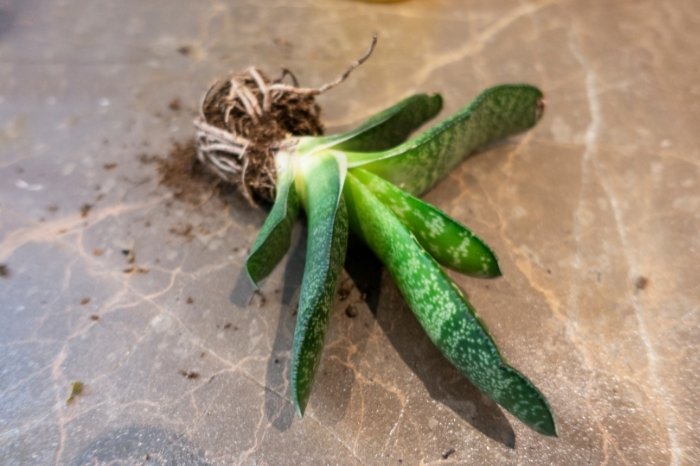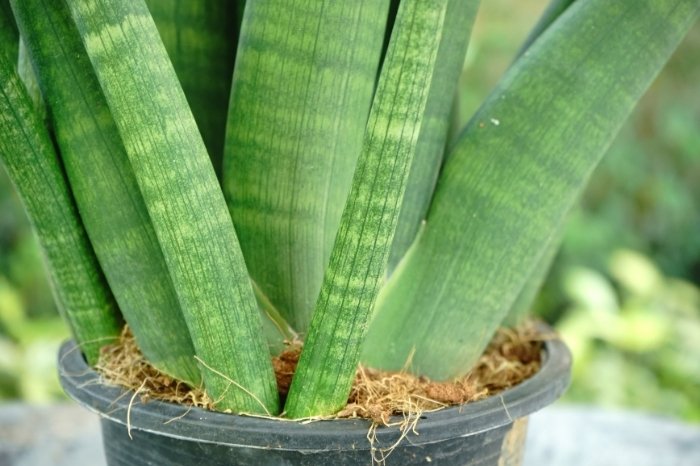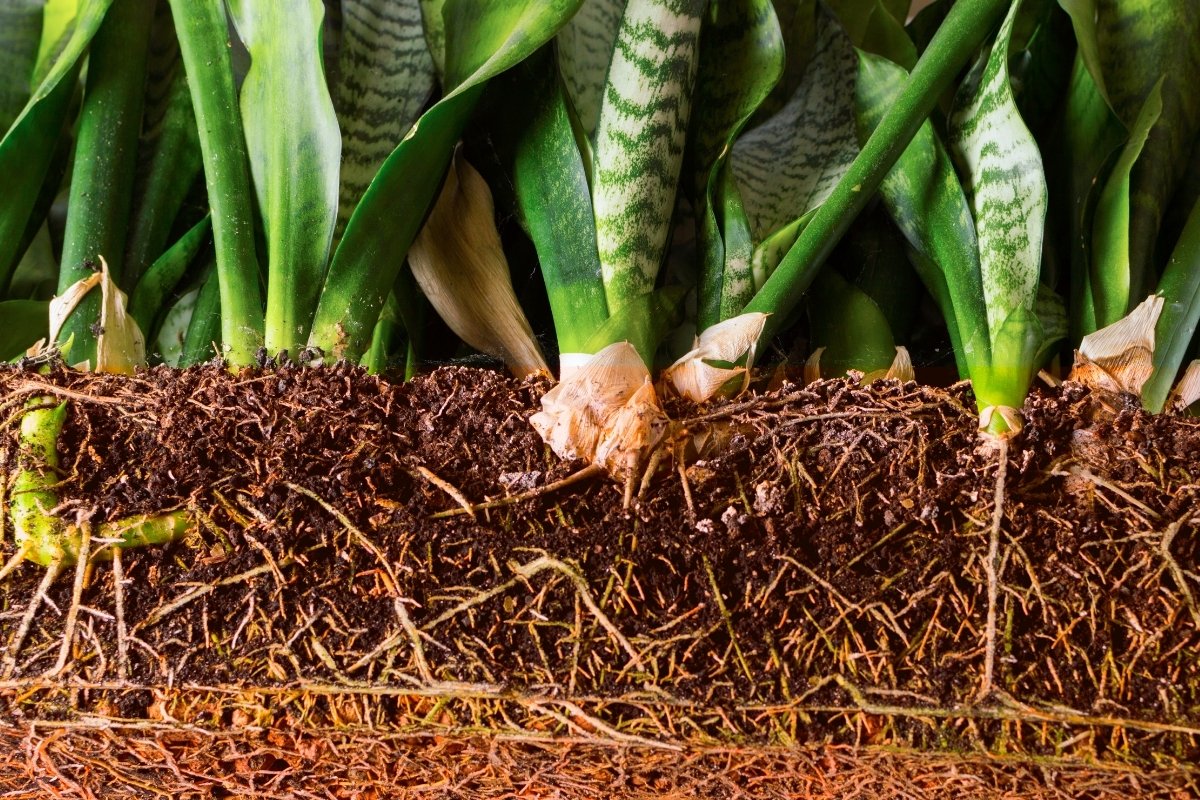Last Updated on March 24, 2022 by Fabiola L.
Repoting brings plant abnormalities to the surface, and you’re left pondering over the diagnosis – what does it mean when your snake plant roots turn orange? Snake plants are low maintenance, sturdy plants that aren’t susceptible to disease or pests. They’re usually a good choice for beginners, as they’re part of the succulent family. So discovering their roots have turned orange can have you puzzled over what you did wrong.
The truth is orange roots are not always a sign of sickness. Your plant might be just fine. Read along to find out what causes this and how to keep your snake plant roots healthy.
Snake Plant Has Orange Roots – Are They Rotted?
Typically, the roots of the snake plant are white or pale yellow. They’re thin, web-like, and leggy. Roots are the primary source of much-needed nutrients and moisture.
Sansevieria or snake plant is a succulent that grows best in well-draining soil. When planted in dense soil or pot without suitable drainage, the soil becomes soggy. The soggy soil leads to root rot. But moisture doesn’t lead to the darkening of the roots. Instead, the moist environment is a breeding ground for harmful fungus. The fungus attacks the roots moving upwards and decaying the whole plant. When left untreated, root rot can kill your plant in a week!

So are orange roots signs of root rot? Sometimes yes, but you have to inspect their overall condition. The symptoms of root rot include darker color, soft and mushy texture, and repelling smell.
Read more about:
What Do Rotten Roots Look Like
To identify a rotten root:
-
-
Start by excavating the bottom part of the plant.
-
Run the roots under water to remove any remaining dirt.
-
Take a closer look and touch the suspecting roots. If they feel soft and mushy, chances are they’re already rotten.
-
Find more information about A Detailed Guide For Snake Plant New Shoots
What Causes Orange Roots On Snake Plant
The orange color doesn’t mean the root is already rotten. Instead, the soil can give the white roots an orange hue. Once you dig out the plant and the roots, look orange, wash a small section to check if it’s not just a soil residue.
When the orange color is joined by a soft and pungent smell, it’s a clear sign of rotting. Of course, the rotted root can kill a plant in a matter of days, but the simply orange-colored root is not a concern.
Overwatering is the ultimate reason for root rot. But it’s not the plain water that hurts the plant. Soggy soil allows for fungus growth. Fungus attacks and feed off the plant. Root rot spreads fast attacking the base and the leaves eventually fall off.
You must plant succulents like the snake plant in well-draining soil, including sand and gravel. An old and dense soil doesn’t allow for proper drainage.
Replant snake plants every 2 to 3 years in new soil and a container that is 1.5 or 2 inches wider. A too-big pot for the plant can also cause root rot. In addition, the excess soil will retain moisture allowing for fungus development.
Make sure to always use sterilized tools, whether you’re cutting a leaf for propagating or when transplanting the plant.
Check Out What To Do With Sunburnt Aloe Vera Plants
How Do Healthy Snake Plant Roots Look
Healthy snake plant roots are thin, web-like, flexible, but dense. They can have a white, orange, or yellow color. Older roots are usually orange. If your plant is thriving and you notice the orange roots when transplanting it to a bigger pot, don’t panic.
If the roots resemble a bird’s nest, they’re healthy, and you should continue with the same care. However, if the plant is struggling and there are just a few soft orange roots, take a closer look to check for root rot.
When the roots of a propagating snake plant start falling off, there is a fungus in the water, and you should replace the water immediately. But beforehand, take the cutting out of the water, wash it, and cut the soft part.
Costa Farms Snake, Sansevieria White-Natural Decor Planter Live Indoor Plant
How To Fix It Root Rot – Snake Plant Roots Orange
After you identify the signs of rotting, it’s best to remove the sick roots. Dig out the whole plant, and prepare a pair of sterilized garden scissors. Then, cut the rotten roots right above the rot. Replant the snake plant in new soil. Sterilize the scissors again so you won’t transmit any pathogens onto another plant. It’s best to discard the soil but don’t add it to compost or your garden.
Snake Plant Turning Orange
Notice the base of your snake plan turned yellow or even orange? The reason again lies in overwatering. The leaves can change color when exposed to stress. Usually, this happens when you switch the plant’s location or temperature. But it’s not only root rot that can lead to your snake plant turning orange.
Remember that sansevieria requires minimal watering. Its natural habitat is the desert, so excess water causes damage and attracts pests. Stressed snake plant easily attracts indoor pests like spider mites. They feed off the leaves’ sap, depriving them, and eventually, they turn yellow.
Snake Plant Has No Roots
Did you find your snake plant has no roots? You dig out the plant to transplant it, only to discover it has no roots.
It’s more common than you thought but hard to notice. Once the roots fall off, the plant can’t receive nutrients from the soil. It resorts to its plants for the much-needed food and moisture. The leaves start showing signs of damage, and that’s when you eventually dig out the plant.
Learn more about How Deep Are Tomato Roots – How Deep They Can Grow?

The good news is you can still propagate some cuttings. Cut above the affected part with a clean and sharp knife. Place the cuttings in the water and let them develop new roots. The snake plant takes a long time to propagate, so replace the water and check for root rot periodically.
Bottom Line: Snake Plant Roots Orange
Orange roots on a snake plant are entirely normal. They’re the older roots that have spent an extended time inside the soil. Darker, mushy, soft, and slimy roots signify root rot. Rot rotting mainly happens due to overwatering. Well-draining soil, less frequent watering, and suitable size pot can prevent root fallout, rotting, and dark roots.
Find more information about Causes Of Snake Plant Mushy Leaves and 5 Critical Signs To Watch Out For
Mary is a passionate gardener who loves spending her days getting her hands dirty and nurturing her plants. She‘s an avid reader of gardening magazines and is always looking for new ways to make her garden thrive. When not outside tending to her plants, Mary can be found inside reading up on the latest gardening trends, comparing notes with fellow gardeners, and finding the perfect pottery planter for her next planting project.



